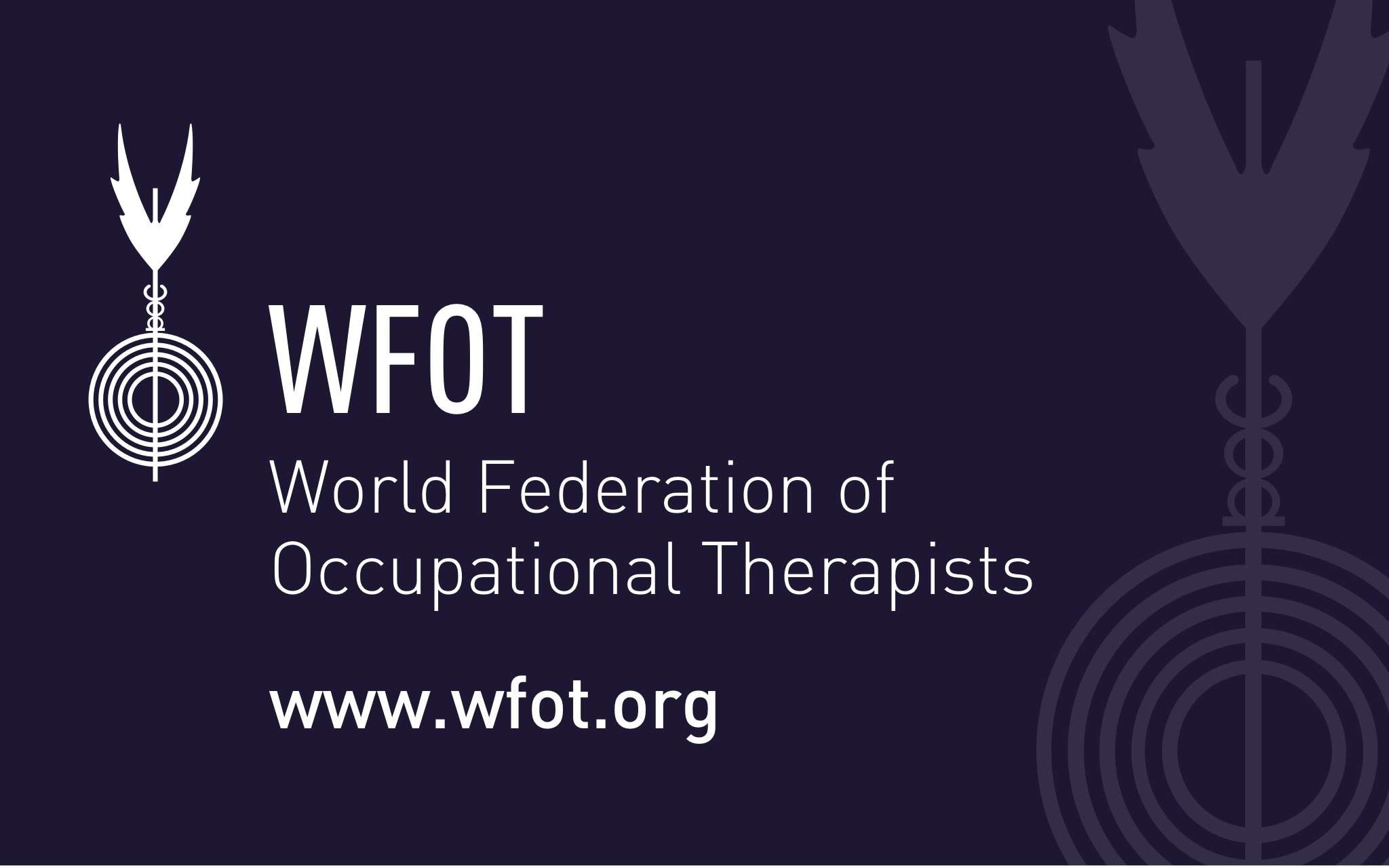A balanced pattern of occupations enhances the health and fulfills the needs of individuals, families, communities, and populations (American Occupational Therapy Association [AOTA], 2014b; Hocking, 2019; Meyer, 1922). Occupations are personalized “everyday activities that people do as individuals, in families, and with communities to occupy time and bring meaning and purpose to life” (World Federation of Occupational Therapists, 2012, para. 2). The purpose of this statement is to describe occupational therapy’s role and contribution in the areas of health promotion and prevention for internal and external audiences. AOTA supports and promotes the involvement of occupational therapy practitioners1 in the development and delivery of programs and services that promote health, well-being, and social participation of all people.
Definition “Occupation”
In occupational therapy, occupations refer to the everyday activities that people do as individuals, in families and with communities to occupy time and bring meaning and purpose to life. Occupations include things people need to, want to and are expected to do.
For further information, read the “Definitions of Occupational Therapy from Member Organisations revised 2010” document in the Resources.
Where Occupational Therapists work
Occupational therapists work with all age groups and in a wide range of physical and psychosocial areas.
Places of employment may include hospitals, clinics, day and rehabilitation centres, home care programmes, special schools, industry and private enterprise.
Many occupational therapists work in private practice and as educators and consultants.
How Occupational Therapists work
Assessment
The occupational therapy process is based on initial and repeated assessments. The occupational therapist together with the person they are working with focus on individual and environmental abilities and problems related to activities in the person’s daily life.
Assessment includes the use of standardised procedures, interviews, observations in a variety of settings and consultation with significant people in the person’s life.
Planning
The results of the assessment are the basis of the plan which includes short and long-term aims of treatment. The plan should be relevant to the person’s development stage, habits, roles, life-style preferences and the environment.
Intervention
Intervention focuses on programs that are person oriented and environmental. These are designed to facilitate the performance of everyday tasks and adaptation of settings in which the person works, lives and socialises. Examples include teaching new techniques and providing equipment which facilitate independence in personal care, reducing environmental barriers and providing resources to lessen stress.
Cooperation
Occupational therapists recognise the importance of teamwork. Cooperation and coordination with other professionals, families, caregivers and volunteers are important in the realisation of the holistic approach.
What Is Occupational Therapy?
Occupational therapy (OT) is a branch of health care that helps people of all ages who have physical, sensory, or cognitive problems. OT can help them regain independence in all areas of their lives.
Occupational therapists help with barriers that affect a person’s emotional, social, and physical needs. To do this, they use everyday activities, exercises, and other therapies.
OT helps kids play, improves their school performance, and aids their daily activities. It also boosts their self-esteem and sense of accomplishment. With OT, kids can:
- Develop fine motor skills so they can grasp and release toys and develop good handwriting or computer skills.
- Improve eye–hand coordination so they can play and do needed school skills such as bat a ball and copy from a blackboard.
- Master basic life skills such as bathing, getting dressed, brushing teeth, and self-feeding.
- Learn positive behaviors and social skills by practicing how they manage frustration and anger.
- Get special equipment to help build their independence. These include wheelchairs, splints, bathing equipment, dressing devices, and communication aids.
Who Might Need Occupational Therapy?
OT can help kids and teens who have:
- birth injuries or birth defects
- sensory processing disorders
- traumatic injuries to the brain or spinal cord
- learning problems
- autism
- juvenile rheumatoid arthritis
- mental health or behavioral problems
- broken bones or other orthopedic injuries
- developmental delays
- post-surgical conditions
- burns
- spina bifida
- traumatic amputations
- cancer
- severe hand injuries
- multiple sclerosis, cerebral palsy, and other chronic illnesses
How Do Physical Therapy and Occupational Therapy Differ?
Physical therapy and occupational therapy both help improve kids’ quality of life, but there are differences. Physical therapy (PT) helps with:
- pain
- strength
- joint range of motion
- endurance
- gross motor skills (large-muscle movements made with the arms, legs, feet, or entire body)
Occupational therapy helps with:
- fine motor skills (small-muscle movements made with the hands, fingers, and toes, such as grasping)
- visual-perceptual skills
- cognitive (thinking) skills
- sensory-processing problems
Who Does Occupational Therapy?
The two professional levels of occupational practice are:
- Occupational therapist (OT): An OT has a 4-year bachelor’s degree in a related field (such as biology, psychology, or health science) and a master’s degree from an accredited occupational therapy program.
- Occupational therapist assistant (OTA): An OTA has an associate’s degree from an accredited OTA program. They can carry out treatment plans developed by an OT but can’t do patient evaluations.
OTs and OTAs must do supervised fieldwork programs and pass a national certification exam. A license to practice is mandatory in most states, as are continuing education classes.
Where Do OTs Work?
Occupational therapists work in many different settings, including hospitals, schools, rehabilitation centers, mental health facilities, private practices. and children’s clinics.
How Can We Find an Occupational Therapist?
If you think occupational therapy could help your child, you can:
- Ask your doctor to refer you to a specialist.
- Talk to the school nurse or guidance counselor. They might be able to recommend someone based on your child’s academic or social needs.
- Contact a nearby hospital or rehabilitation center for referrals.
- Visit The American Occupational Therapy Association website to find your state’s occupational therapy association.
How to Become an Occupational Therapist
About this section

Occupational therapists can help people cope with arthritis and other ailments.
Occupational therapists need at least a master’s degree in occupational therapy; some therapists have a doctoral degree. Occupational therapists also must be licensed.
Education
Most occupational therapists enter the occupation with a master’s degree in occupational therapy. Occupational therapy programs are accredited by the Accreditation Council for Occupational Therapy Education, part of the American Occupational Therapy Association.
Admission to graduate programs in occupational therapy typically requires a bachelor’s degree in healthcare and related fields with coursework in biology, physiology, and other sciences. Many programs also require applicants to have volunteered or worked in an occupational therapy setting. Candidates should contact the program that they are interested in attending about specific requirements.
Master’s programs usually take 2 to 3 years to complete; doctoral programs take about 3 and a half years. Some schools offer a dual-degree program in which the student earns a bachelor’s degree and a master’s degree in 5 years. Part-time programs that offer courses on nights and weekends are also available.
Both master’s and doctoral programs require at least 24 weeks of supervised fieldwork, in which prospective occupational therapists gain clinical work experience. In addition, doctoral programs require a 16-week capstone experience.
Licenses, Certifications, and Registrations
All states require occupational therapists to be licensed. Licensing requirements vary by state, but all require candidates to pass the national examination administered by the National Board for Certification in Occupational Therapy (NBCOT). To sit for the NBCOT exam, candidates must have earned a degree from an accredited educational program and completed all fieldwork requirements.
Therapists must pass the NBCOT exam to use the title “Occupational Therapist, Registered” (OTR). They must also take continuing education classes to maintain certification.
The American Occupational Therapy Association also offers a number of board and specialty certifications for therapists who want to demonstrate their advanced or specialized knowledge in areas of practice, such as pediatrics, mental health, or low vision.
Important Qualities
Adaptability. Occupational therapists must be flexible when treating patients. Because not every type of therapy will work for each patient, therapists may need to be creative when determining the treatment plans and adaptive devices that best suit each patient’s needs.
Communication skills. Occupational therapists must listen attentively to what patients tell them and must explain what they want their patients to do. When communicating with other members of the patient’s medical team, therapists must clearly explain the treatment plan for the patient and any progress made by the patient.
Compassion. Occupational therapists are usually drawn to the profession by a desire to help people and improve their daily lives. Therapists must be sensitive to a patient’s needs and concerns, especially when assisting the patient with personal activities.
Interpersonal skills. Because occupational therapists spend their time teaching and explaining therapies to patients, they need to earn the trust and respect of those patients and their families.
Patience. Dealing with injuries, illnesses, and disabilities is frustrating for many people. Occupational therapists should exhibit patience in order to provide quality care to the people they serve.



